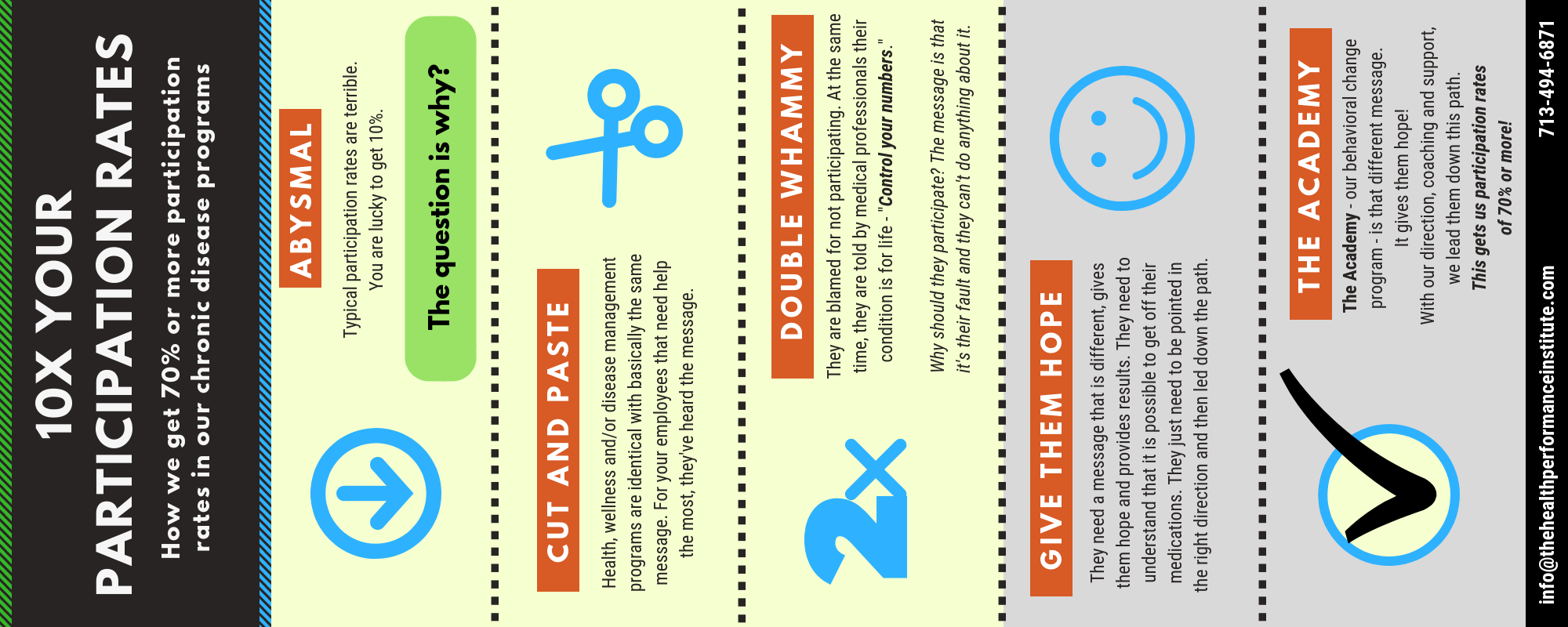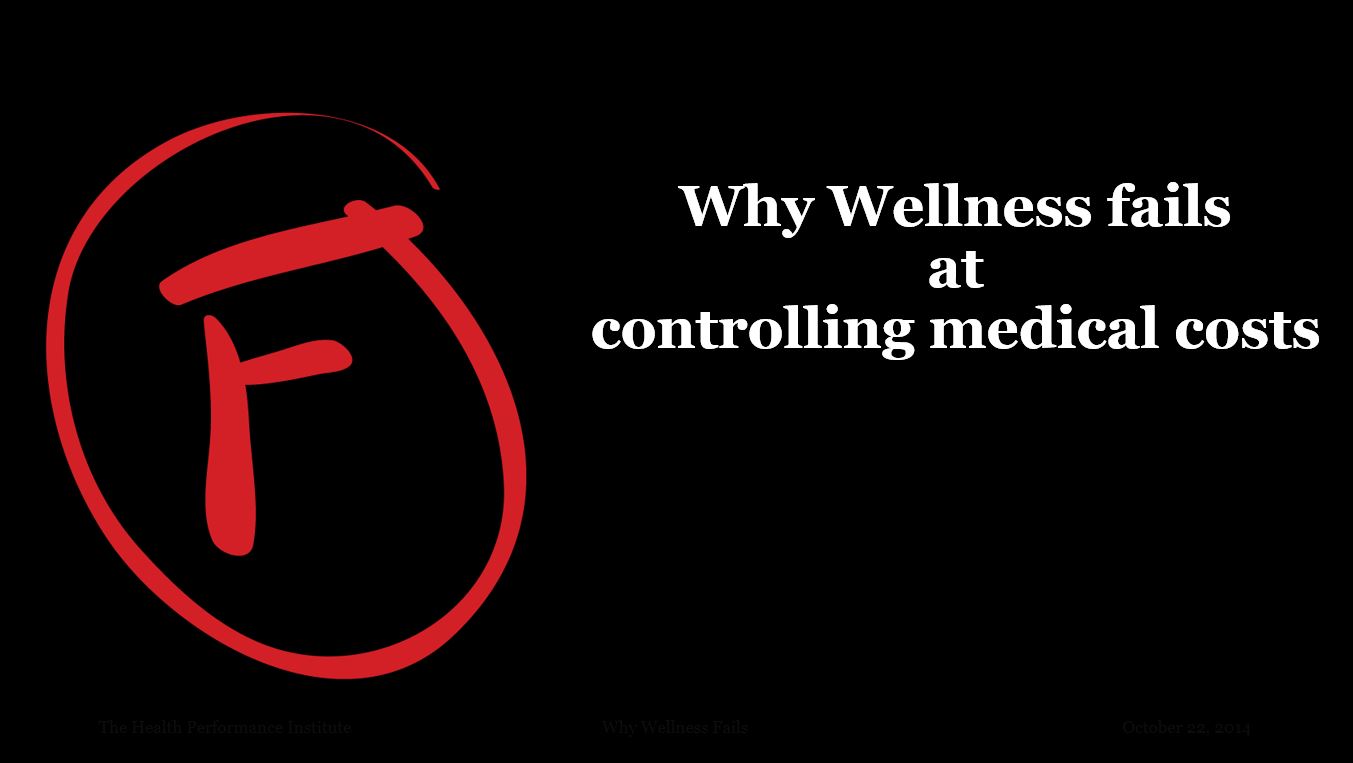Type 2 diabetes is a significant burden on our healthcare system and likely worse than current estimates. Despite this, the real issue is what will happen in the next 10, 15 or 20 years.
There are at least three reasons for concern.
1. Current population estimates are wrong.
Recently published research would suggest that screening with fasting blood glucose is inadequate – significantly under-reporting actual numbers. For example, research using HbA1c as a screening tool showed that more than 50% of the adult population has some form of diabetes – diagnosed type 2 diabetic, prediabetic or undiagnosed. This means if you use fasting blood glucose as the primary measure for screening, you’re only getting part of the picture from your employee population.
This is an easy issue to fix and I discuss it below.
2. Long-term, it is the most expensive condition to treat.
While medications for some diseases and conditions receive headlines for high cost – hepatitis and cancer, for example. Costs for type 2 diabetes medications receive little press. This lack of coverage doesn’t mean treatment is inexpensive, as anyone who knows the cost of insulin understands.
Without getting into a discussion of why certain prescription drugs receive media attention and others do not, drugs for hepatitis and cancer are taken for a short time – usually no longer than 24 months. By comparison, type 2 diabetics can take insulin and other medications for years, even decades. These costs add up. And as the condition deteriorates and co-morbidities increase, additional medication and more expensive treatment options are needed.
3. Treatment protocols keep people diabetic
Current guidelines target a symptom of the condition rather than the cause. While there is mention of weight loss, exercise and diet, the primary method of treatment involves medication to control blood sugar. This is problematic for two reasons: 1) Individuals become dependent on medication to control their blood sugar; and, 2) It implies that elevated blood sugar is the problem.
Elevated blood sugar is a symptom, insulin resistance is the cause. Since diabetics are taking medication for a symptom of the problem, the cause of the problem doesn’t get better. In fact, it gets worse over time. This means type 2 diabetics will eventually need additional medication and will also further increase their risk for co-morbidities.
With this as our approach to treatment, there is little hope to eliminate the condition once a person has been diagnosed. They get stuck in our healthcare system. And since almost no one is eliminating the condition, the percentage of people with type 2 diabetes only grows.
Looking down the road
This is why there is a tidal wave on the horizon and it forms the crux of why every organization needs to implement a type 2 diabetes strategy. If we continue in this manner, things will be exponentially worse in a few short years. Since diabetes is already the most expensive condition to have and treat, this does not bode well.
So it is important we all do something and here is what you can do.
Commit to a type 2 diabetes strategy
Your organization can have a significant impact by implementing three steps.
Step 1. More appropriate screening
Earlier I mentioned that population estimates are wrong. You can get accurate population estimates within your organization by making a small change. Measure HbA1c (or simply A1c) in your annual HRA or biometric screenings.
HbA1c provides information on blood sugar control over the previous 2-3 months, which is a better indicator of diabetes risk than fasting blood glucose. Request this test from your provider. The same blood test used to measure fasting glucose can be used, so there is zero impact on your employee population.
If your provider is unable or doesn’t want to do this, contact me. I will help you find someone that can. If there is additional cost, the benefits of having accurate information outweigh the additional costs.
Step 2. Find providers with proven results
Do this specifically as it relates to type 2 diabetes. You should be able to find providers that can work with your existing wellness offerings. General programs that offer health/phone coaching usually don’t meet the standard of proven results for type 2 diabetes. Their message tends to be directed at the masses, which is not helpful or productive for type 2 diabetics. This step is important since, as noted above, more than 50% of adults have some form of type 2 diabetes.
There will likely be additional cost for this but a program with proven results will pay for itself. For example, if you have 100 type 2 diabetics using insulin in your organization, the cost for insulin alone is about $500,000 per year! When you consider other medications, lost productivity, time at the doctor’s office, etc., actual costs are higher. A good provider should be able to cut this in half or even eliminate it completely. If you save more than $500,000 per year, their costs are almost irrelevant.
Step 3. Everyone wants the same thing
At HPI, our most important corporate mission is to eliminate type 2 diabetes in the US population by the year 2020. You can help us achieve this, because all business leaders want the same thing – happy, healthy and productive employees. Guess what? Your employees want to be happy, healthy and productive too.
However, those needing our help (and yours) the most, don’t get too excited about the standard “wellness” offerings. Why? Because it is too generic and not focused on them. Besides, they’ve heard the message before.
So what to do?
Leadership by example is often used, but it is appropriate in this case. From the top of your organization, implementing a strategy for type 2 diabetes needs to be important. And when you implement steps 1 and 2 above, the importance message filters down. We see it all the time in our work.
When you do this correctly, it is easy to see, feel and measure.
We are here to help!
By now, I hope you realize that implementing a strategy for type 2 diabetes is important. Done properly, it will help your organization and your employees. The proverbial win-win. However, if you do nothing, all the negatives mentioned above will be exponentially worse.
I also understand the prospect of this can be a bit overwhelming. So we are here to help. If you have questions about anything within this article or need additional information on implementing any of these steps, let me know. Send me an email. Message me on Twitter, Facebook or LinkedIn or comment below and I will help.
Since this is an important message, please share with your colleagues, co-workers and leadership within your organization.
Thank you!





One Comment on “Your organization needs a type 2 diabetes strategy. Here’s why.”